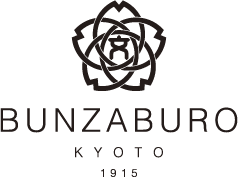Katayama Bunzaburo Shoten was founded by the first generation, Bunzaburo Katayama, in 1915 in Karasuma, Kyoto, as a kimono manufacturer specializing in tie-dyeing. Since then, the history of Katayama Bunzaburo Store has been one of constant innovation. The simple chic style which Bunzaburo specialized in was based on an aesthetic sense that was ahead of its time.
By the time the second generation, Fumio Katayama, came along, the company was aiming for a fusion of tradition and innovation to meet the changing lifestyles, and began to promote the appeal of tie-dye in fields other than kimono, such as interior design and fashion.
























